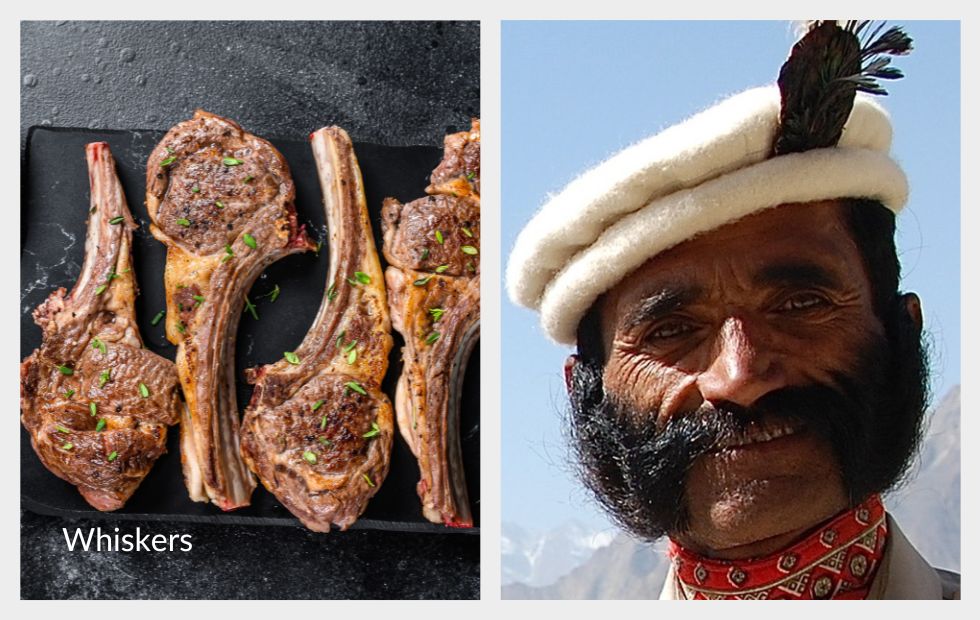The kitchen is a place of community and contentment—so it’s no surprise that throughout history, it’s also been a haven for tomfoolery. While much of today’s kitchen slang has arisen as a response to the stressful working conditions back of house and the potential problems guests cause in the front, some remnants of this comical side of the culinary landscape remain.
When it comes to kitchen lingo, one doesn’t need to look much further than the 19th and 20th centuries to see that creativity was very much alive in the way foods were ordered. Let’s explore some of the weirdest kitchen terms, including why they got to be so unusual in the first place and why all but a few have disappeared from use.
When Kitchen Slang Gets Weird
In the cheapest restaurants of the 19th and 20th centuries, it was common for cooks and servers not to be able to read. As a result, there was little use in establishing a ticket (or, as we learned in a previous article, a “chit”) system for written orders and requests. Instead, workers would simply shout the guest’s selection back to the kitchen. After days of repeating the same dull requests, it’s easy to see why people would be eager to spice things up.
News soon spread of an (alleged) battle of wits between a guest and a waiter. The guest intentionally ordered something confusing, hoping the waiter would shout the nonsense aloud to the kitchen. Embracing the foolery, the waiter shouted the customer’s order of eggs as “Adam and Eve on a raft; wreck ‘em.” These sassy statements soon became a spot of joy in eateries, creating a sense of community in hilarity. Some of the most notorious “offenders” include:

Blindfold two
To scald eggs quickly such that they develop a gentle white coating over the yolk.

Springer in the mud
Chicken stew, derived from the brownish color of the stew base and the Springer variety of chicken used in the mix.

Mutton chops beard example, via Wikimedia Commons
Whiskers
Mutton chops, a reference to a man’s facial hair being called “whiskers” and the mutton chop style of beards.

Couple o’ bales of hay and squeeze the cow
Shredded wheat accompanied by milk.

Drive the cow down this way
To ask someone to pass milk or cream for tea and coffee.

Trilby foot
Based on the 1894 novel Trilby, a Trilby foot is an order of pigs’ feet; the author’s focus throughout Trilby repeatedly drifts back to a model with elegant feet.

Belly warmer
Coffee.

Brick
A biscuit, likely derived from hardtack and the dense flours used to make biscuits for minimal cost.
The Remnants Today
While we rarely go to a diner to order a couple o’ bales of hay and a belly warmer, there are still some remnants of these playful slang terms in use today. In fact, they’re so ubiquitous that many people don’t realize they started as lingo at all. For instance:

Sunny side up
Unturned fried eggs, which remain a staple on most breakfast menus throughout the world.

Over easy
Fried eggs that have been flipped but the yolk is still runny—another common menu inclusion.

Joe
Coffee, as in “a cup of Joe.” This term likely originated from the phrase “average Joe,” describing the average man. Because coffee was seen as the everyday man’s drink, it became “Joe’s drink” or a “cup of Joe.”

The works
With everything, as in a sandwich with all toppings or a meal fixed in what is considered the “standard” way for that establishment.

Sh*t on the shingle
Creamed chipped beef on toast. This term has seen gradually decreased use and is facing the threat of fading into history like many of the other terms above. It continues to hold out in some of the eastern United States.
Why Did They Go?

Restaurant culture shifted from shouted orders to digital menus, fading old kitchen slang.
For all the joy that these kitchen colloquialisms provided, most of them are relics of the past. But why did they disappear when they were so much fun? It all loops back around to what we shared in the first part of this series: Slang in the Kitchen. As mealtime became less of a community huddle and more of an enterprise, the need for efficiency and consistency outcompeted the frivolity of a sassy meal name shouted over tabletops. Increased literacy rates led to written chits, on which “Adam and Eve on a raft; wreck ‘em” became cumbersome compared to “two eggs on toast.”
Despite the gradual decline of these comical food names, one thing remains true: language is always changing. What new slang exists now to describe meals that, a hundred years from now, we might look back on in the same way as a springer in the mud? Grab a glizzy and a cold one (that’s a hot dog and a beer!) before these terms, too, go out of style.


